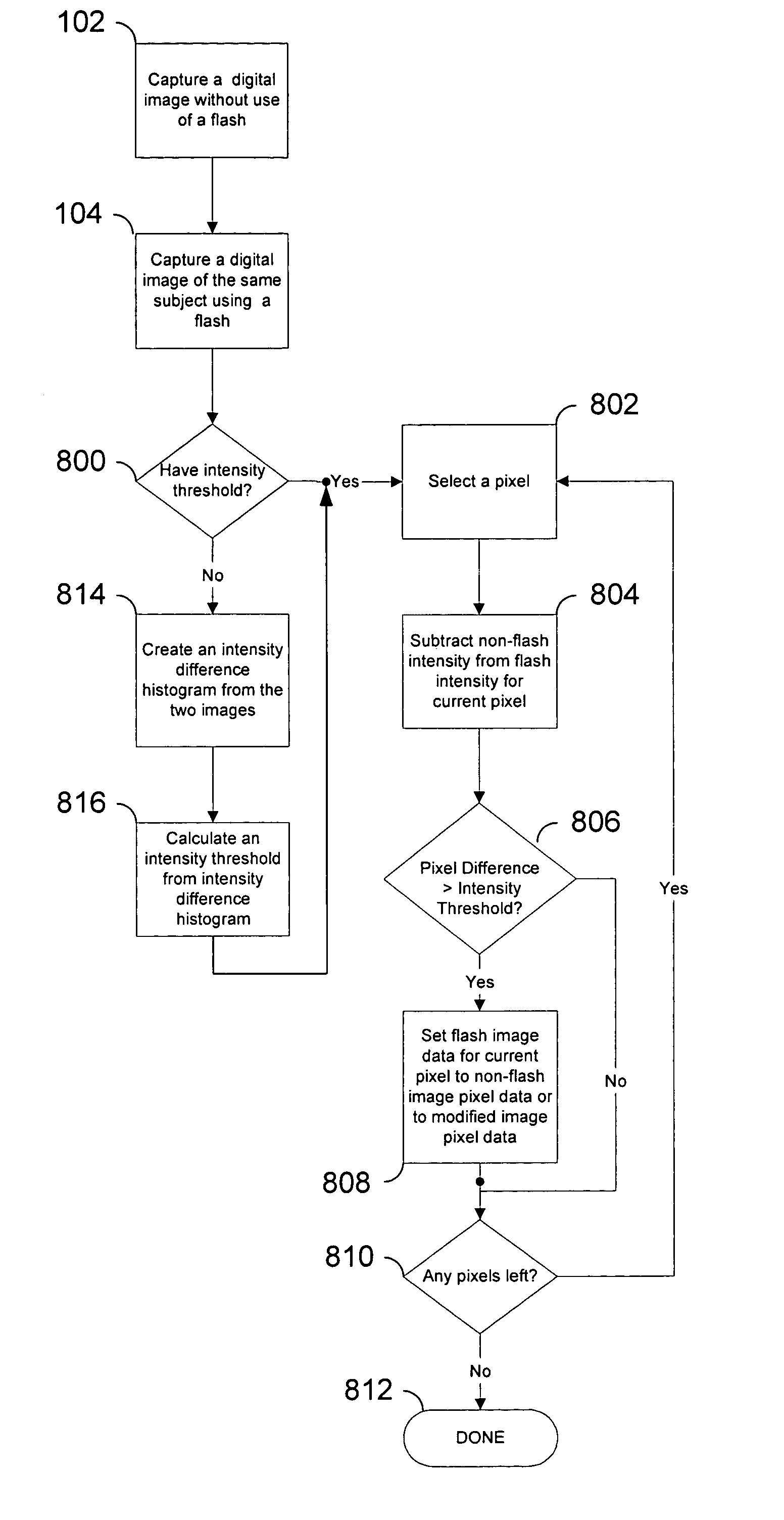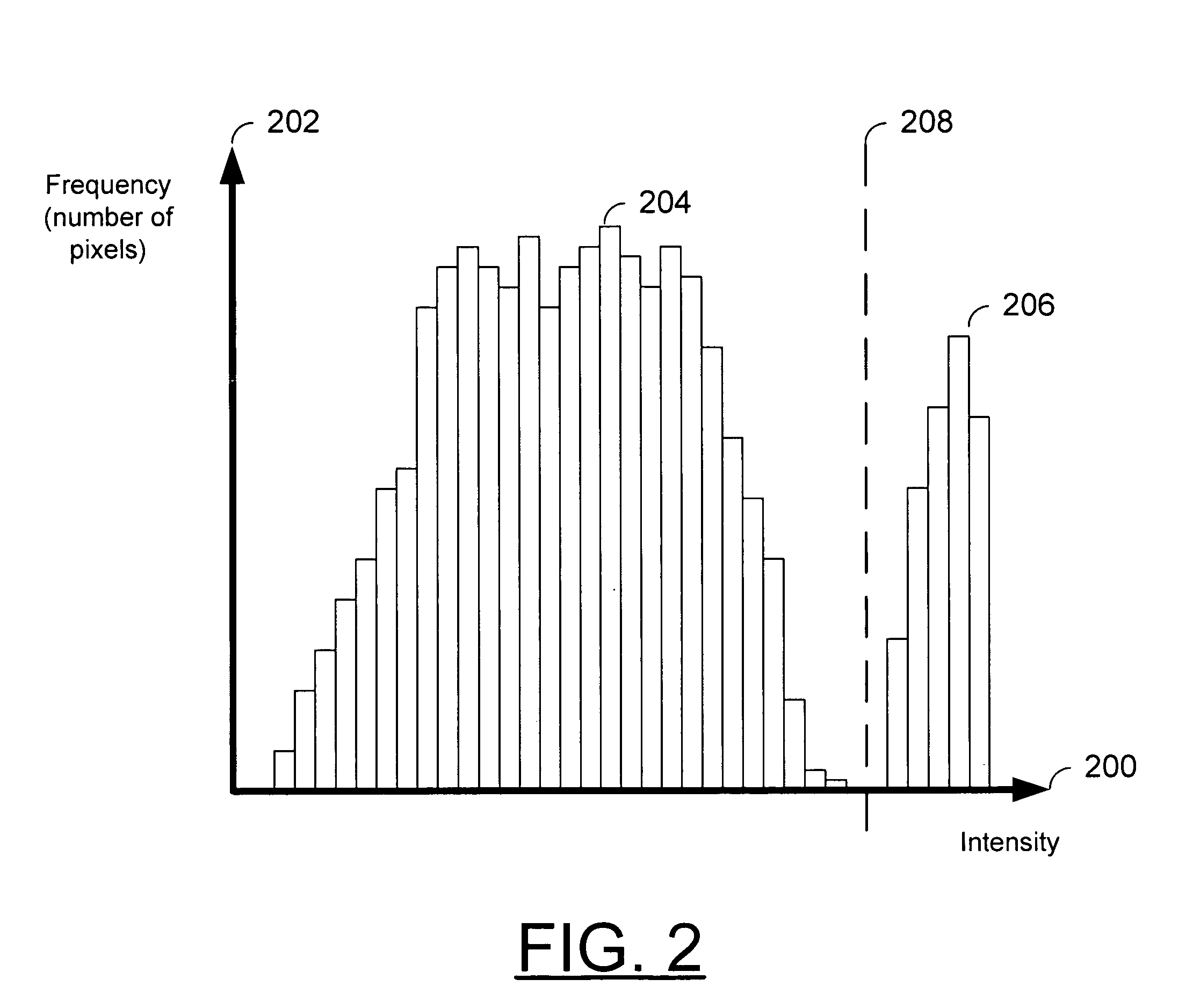Method and apparatus for the removal of flash artifacts
a technology of flash artifacts and removal methods, applied in the field of flash photography, can solve the problems of detracting from the resulting photograph, using a flash does have its drawbacks,
- Summary
- Abstract
- Description
- Claims
- Application Information
AI Technical Summary
Problems solved by technology
Method used
Image
Examples
Embodiment Construction
[0015]FIG. 1 is a flowchart of a process for removing flash artifacts from a pair of digital images. In a step 102, a digital image is captured without the use of a flash. In a step 104, another digital image of the same subject is captured with the use of a flash. Note that it makes no difference in which order these two digital images are captured. However, it is desirable that the subject does not move between the capture of these two digital images. This may be accomplished by taking the two images in rapid succession. In a step 106, the flash-less digital image is subtracted from the flash digital image producing a difference image. In a black and white (gray scale) implementation of this invention, the digital images contain intensity data alone, and the difference image is a representation of the intensity changes in the image brought about by the use of the flash. In a step 108, an intensity histogram is generated from the difference image. This intensity histogram may have ...
PUM
 Login to View More
Login to View More Abstract
Description
Claims
Application Information
 Login to View More
Login to View More - R&D
- Intellectual Property
- Life Sciences
- Materials
- Tech Scout
- Unparalleled Data Quality
- Higher Quality Content
- 60% Fewer Hallucinations
Browse by: Latest US Patents, China's latest patents, Technical Efficacy Thesaurus, Application Domain, Technology Topic, Popular Technical Reports.
© 2025 PatSnap. All rights reserved.Legal|Privacy policy|Modern Slavery Act Transparency Statement|Sitemap|About US| Contact US: help@patsnap.com



